Posted by · Leave a Comment
Tracy and Dave continue the conversation about managing pasture land and show what a few weeks growth in a healthy pasture looks like.
Posted by · Leave a Comment
Tracy and Dave continue the conversation about managing pasture land and show what a few weeks growth in a healthy pasture looks like.
Posted by · Leave a Comment
Tracy and Dave discuss a comprehensive approach to managing pasture land and promoting optimal health among the flocks. Witnessing the release of the animals to pasture near the end of the program will delight the child in all of us.
Posted by · 2 Comments
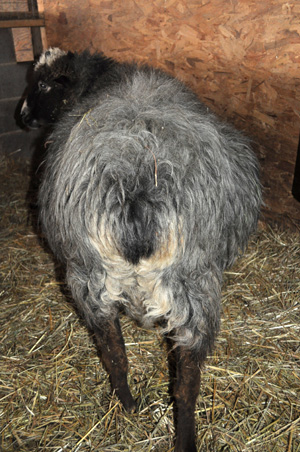
Reese - The Matriarch
I laughed out loud when I took this picture.
I was so careful to line up behind Reese. I wanted that perfectly square-on shot from her back end to show her growing abdomen (her lambing is just weeks away). Normally, she doesn’t let anyone stand behind her for too long. She is the matriarch, after all, and is usually front and center with everything and everyone.
The reason I wanted the picture in the first place, was to show her symmetrical, expanding abdomen.
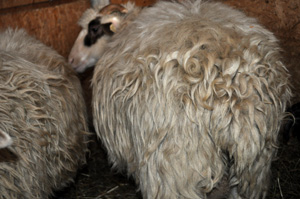
Rosie - A Riveting Image
With only two weeks left until the start of lambing, the ewes that appear to be carrying twins are shaping up nicely — almost as if they have saddle bags hung neatly on each of their sides.
Early in the gestation, I jump to all sorts of conclusions based on the way they are “presenting.” One year, I was convinced Reese was only carrying one lamb (she has always twinned). She was carrying so low, and her sides just didn’t seem to protrude like they did in years past. When she went into labor, we watched in amazement and delight as she gave birth to triplets!
This year’s shaping up to be just as exciting….stay tuned!
Posted by · 3 Comments
Tracy visits Oley Valley Feed, a local feed store, and picks up several important tips on proper watering of livestock in winter.
Posted by · 1 Comment
Rebecca Gunther of Jersey West Farm provides more tips about show ring sheep wrangling in part two of our program.
Posted by · 1 Comment
Our host, Tracy Toth, visits Rebecca Gunther of Jersey West Farm who shares wonderful tips about sheep wrangling in the show ring. We learn a lot about the conformation and characteristics of Navajo-Churro sheep in Webisode 1 of this two part program.
The story continues with Webisode 2, be sure to check it out.
Posted by · Leave a Comment
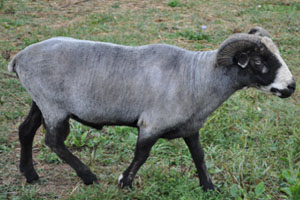
We bred our ewes to Baw Blue (or Blue as he’s commonly called) last year. Reese, our matriarch, “threw” Penny this past Spring.
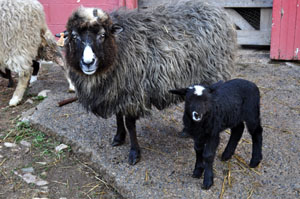
Reese and newborn Penny
Penny was born jet-black except for a little patch of white on her nose, crown, and very faint white “tears” (which I didn’t even notice until it came time to note her markings).
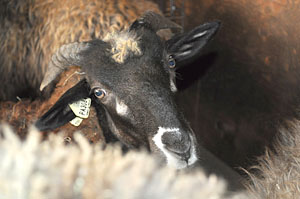
Penny Today
As Penny’s coat grew over the summer, she exhibited signs of black and brown in her wool. The color of churro wool will do that. It can change with age and bleach out with exposure to sunlight. Yet, when the shearer came last week??? What a lovely surprise! As her outer coat fell to the floor, her inner coat was a shimmering light gray-blue against her black legs and under-belly…matched with her distinct “tears” means she’s BLUE. English Blue to be precise.
Blue is the genetic color designation (which does not change) and will be noted on her registry paperwork. Her wool color will change with age and will also be noted on the paperwork — which will accompany a fleece sample from her shearing at one year of age.
[The following “Genetic Color Terms” courtesy of www.navajo-churrosheep.com]
Blue – Born black but in first year develop silver/charcoal inner coat while outer remains brownish/black. May develop white on eyes and muzzle but keep dark points, legs, body and belly are dark. Hips, sides are greyed.
English Blue – Must have white tears, may have white in ears or on muzzle. This is a pattern on Black or Brown.
Texel Blue – Resembles Badgerface. There is a dark bar over each eye, dark top of nose, dark under jaw on light face.
Why is this so special? It’s special because of the rarity of this particular color. The table shows, historically, less than one percent of the population of registered Churro possess this genetic color.
Navajo Churro Color Data – Past and Present
| Color | 1988 | 1998 | Avg. to Date |
| White | 45% | 27% | 34% |
| White/Tan | 4% | 6% | 7% |
| Black | 22% | 40% | 38% |
| Brown | 1% | 18% | 9% |
| Dark Brown | 2% | 2% | 1.7% |
| Grey | 12% | 4% | 4.5% |
| Grey/Tan | 2% | 0% | 0.6% |
| Blue | <1% | <1% | <1% |
| Badgerface | 3% | 10% | 3.6% |
| Black & Tan | 1% | 2% | 1.1% |
| Spots | 3% | 3% | 2.7% |
| Multi | 4% | 1% | 1% |
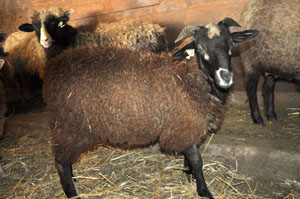
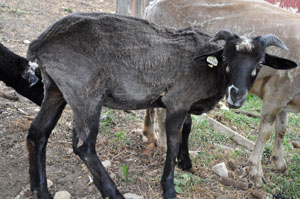
I’m so thrilled to have this color combination in our flock—and to know it’s the matriarch’s ewe-lamb that has it. I can’t wait until Penny’s of “breed-able” age to see how her very special traits are passed on!
Posted by · Leave a Comment
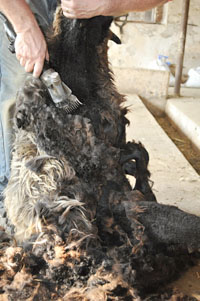 Navajo-Churro sheep need to be shorn twice a year. Their wool grows an inch a month.
Navajo-Churro sheep need to be shorn twice a year. Their wool grows an inch a month.
Typically, we’ll have the shearer come in September and March (or thereabouts). The shearing happens before they’re bred and then again after the lambs arrive. The timing is good in that it cleans the mamas from the lambing and gets them ready for the warmer months.
Our shearer has been doing this his entire life. It’s something I wouldn’t mind trying but it’s such a delicate job, and I love my flock so much, that I’d rather a professional be at the helm of this task.
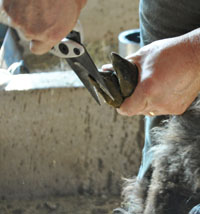 He’ll trim the hooves, de-worm (if we wish) – which just means he administers a “drench,” that is a liquid – and shear.
He’ll trim the hooves, de-worm (if we wish) – which just means he administers a “drench,” that is a liquid – and shear.
His technique is one that many spinners like because he doesn’t take “second cuts.” He takes one long pass along the sheep instead of going back to cut again (resulting in smaller “bits” of wool left in the fleece).
Another good thing about having him do the shearing is that he’s an “outsider” to our flock – he’s a valuable objective observer as to the overall health and well-being of everyone.
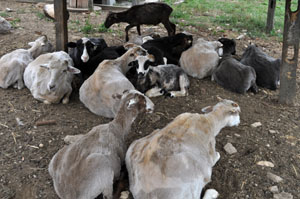 Sheep almost look like different animals after a shearing. It just has to feel good to have that “haircut” every six months or so – just look at how relaxed they all looked that next morning.
Sheep almost look like different animals after a shearing. It just has to feel good to have that “haircut” every six months or so – just look at how relaxed they all looked that next morning.
Posted by · Leave a Comment
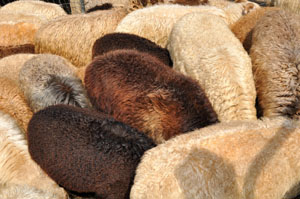 The Navajo-Churro wool is beautiful! Just look at the colors of the sheep I was able to photograph before everyone came charging into the barn last week. I’ve been fascinated by their coats since we first purchased Reese and her twins, Lovey and Clara (Clara Barton Angel Of The Battlefield, so named by my history-loving son) years ago.
The Navajo-Churro wool is beautiful! Just look at the colors of the sheep I was able to photograph before everyone came charging into the barn last week. I’ve been fascinated by their coats since we first purchased Reese and her twins, Lovey and Clara (Clara Barton Angel Of The Battlefield, so named by my history-loving son) years ago.
Attending sheep and wool festivals is always a treat because you get to see how spinners are using the wool and wool blends. I couldn’t wait to visit Loch’s Fiber Mill to “fill in the blanks”—I see the wool when it’s fallen from the sheep after shearing and I’ve seen the finished product in skeins, ready for knitting or weaving, but didn’t know exactly what went in to processing wool.
The morning we spent at the fiber mill was fascinating and informative….so much so that we couldn’t do just one quick segment—we had to break it down into parts! Jamie and Randy were so hospitable they invited us back to their maple syrup festival next year.
For more information, visit www.lochsmaple.com/fibermill/index.html
Posted by · Leave a Comment
Our host, Tracy Toth, tours a wool processing “fiber mill” in Wool Webisode 1.